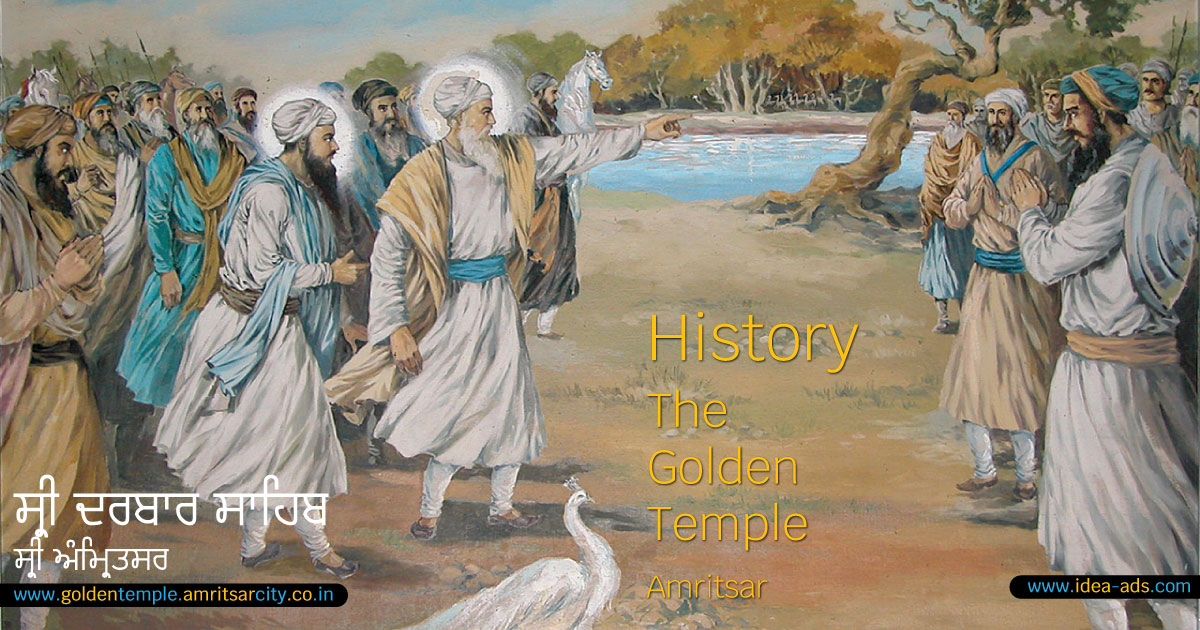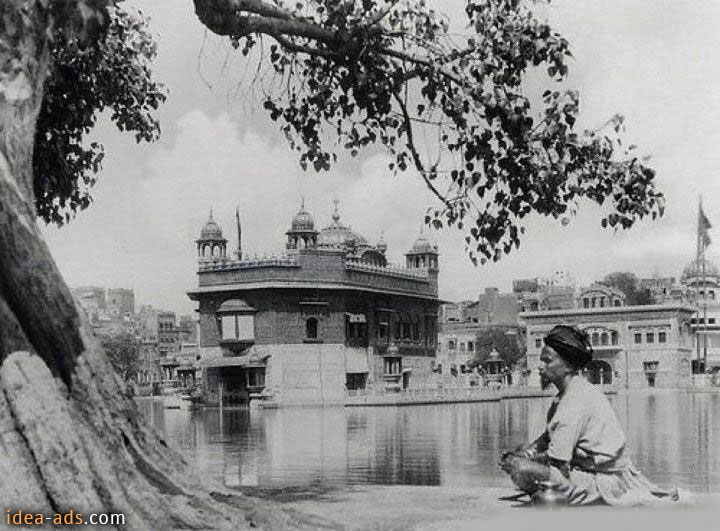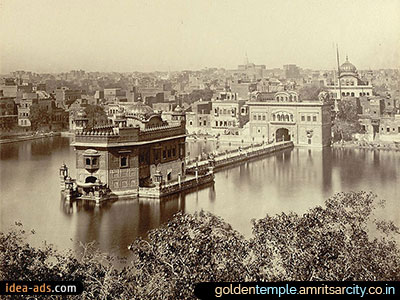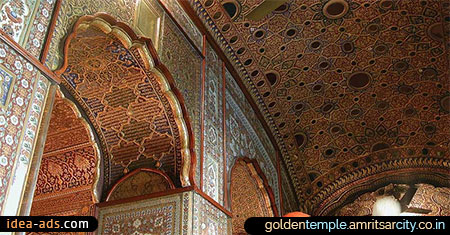Travel Guide to




Sri Darbar Sahib Amritsar (The Golden Temple Amritsar) - The abode of God, is the holiest Gurudwara of Sikhism, located in the city of Amritsar, Punjab, India. Amritsar (literally, the tank of nectar of immortality) was founded in 1577 by the fourth Sikh guru, Guru Ram Das. The fifth Sikh Guru, Guru Arjan Dev, designed the Sri Darbar Sahib Amritsar (The Golden Temple Amritsar) to be built in the centre of this holy tank, and upon its construction, installed the Adi Granth, the holy scripture of Sikhism, inside the Sri Darbar Sahib Amritsar (The Golden Temple Amritsar). Sri Darbar Sahib Amritsar (The Golden Temple Amritsar) complex is also home to the Akal Takht (the throne of the timeless one, constituted by the Sixth Guru, Guru Hargobind Sahib Ji). While the Sri Darbar Sahib Amritsar (The Golden Temple Amritsar) is regarded as the abode of God's spiritual attribute, the Akal Takht is the seat of God's temporal authority.

The construction of Sri Darbar Sahib Amritsar (The Golden Temple Amritsar) was intended to build a place of worship for men and women from all walks of life and all religions to come and worship God equally. Accordingly, as a gesture of this non-sectarian universalness of Sikhism, Guru Arjan Dev had specially invited the Muslim Sufi saint, Hazrat Mian Mir to lay the foundation stone of Sri Darbar Sahib Amritsar (The Golden Temple Amritsar). The four entrances (representing the four directions) to get into the Sri Darbar Sahib Amritsar (The Golden Temple Amritsar) also symbolise the openness of the Sikhs towards all people and religions. Over 100,000 people visit the holy shrine daily for worship, and also partake jointly in the free community kitchen and meal (Langar (community kitchen)) regardless of any distinctions, a tradition that is a hallmark of all Sikh Gurudwaras.

Sri Darbar Sahib Amritsar (The Golden Temple Amritsar) literally means the Temple of God. Guru Amar Das had ordered Guru Ram Das to create a nectarous tank as a place for worship for the Sikh religion. Guru Ram Das instructed all his Sikhs to join in the work, under Baba Budha Ji's superintendence, and engaged labourers to assist them. He said that the tank of nectar should be God's home, and whoever bathed in it shall obtain all spiritual and temporal advantages. During the progress of the work, the hut in which the Guru first sheltered himself was expanded for his residence; it is now known as the Guru's Mahal, or palace.
In 1578 Guru Ram Das excavated a tank, which subsequently became known as Amritsar (Pool of the Nectar of Immortality), giving its name to the city that grew around it. In due course, Sri Darbar Sahib Amritsar (The Golden Temple Amritsar), was built in the middle of this tank and became the supreme centre of Sikhism. Its sanctum came to house the Adi Granth comprising compositions of Sikh Gurus and other saints considered to have Sikh values and philosophies, e.g., Baba Farid and Kabir. The compilation of the Adi Granth was started by the fifth guru of Sikhism, Guru Arjan Dev.

Some of the architectural features of Sri Darbar Sahib Amritsar (The Golden Temple Amritsar) were intended to be symbolic of the Sikh world view. Instead of the normal custom of building a Gurudwara on high land, it was built at a lower level than the surrounding land so that devotees would have to go down steps to enter it. In addition, instead of one entrance, Sri Darbar Sahib Amritsar (The Golden Temple Amritsar) has four entrances.
The origin and evolution of the place where the Golden Temple now stands is covered in mystery. Some sources trace its origin from the pre-historic era as an Indian place of worship. The location of the Golden Temple is a low lying area with a big pond surrounded by dense jungle. This piece of land was shred by Sultanwind Tung, Gilwali and Gumtala etc. villages. More over its geographical location was superb. It was next to the city of Lahore, the then capital of Punjab and the highway connecting India and Central Asian countries was also running through this piece of land.